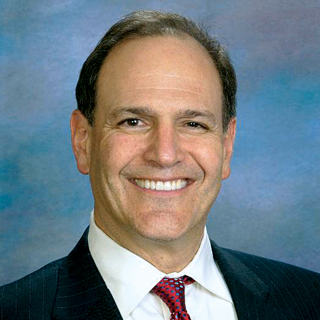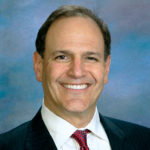
The COVID-19 pandemic shutdown of the U.S. has had a radical effect on the lives of people, from the oldest to the youngest and everyone in between. To address the impact on employees and employers from the Coronavirus on employees and employers, Congress passed the Families First Coronavirus Response Act (FFCRA) that significantly changed the Family and Medical Leave Act (FMLA). FFCRA was signed by President Trump on March 18 and went into effect on April 1, 2020. It will remain in effect through December 31, 2020.
Four facets of FFCRA apply mainly to employers. These include provision for paid sick leave, paid family and medical leave, tax credits and expanded unemployment insurance. There are two significant exemptions allowed by the FFCRA:
- Employers with less than 50 employees may seek an exemption from the U.S. Department of Labor (DOL), but the employer must demonstrate that compliance with the Act would “jeopardize the viability” of the business based on DOL standards.
- Healthcare providers and emergency responders may be exempted from paid sick leave or expanded family and medical leave by their employer.
Who are considered healthcare providers by the DOL?
“A healthcare provider is defined as anyone employed at any doctor’s office, hospital, healthcare center, clinic, post-secondary educational institution offering healthcare instruction, medical school, local health department or agency, nursing facility, retirement facility, nursing home, home healthcare provider, any facility that performs laboratory or medical testing, pharmacy, or any similar institution, employer, or entity. This includes any permanent or temporary institution, facility, location, or site where medical services are provided that are similar to such institutions.”
“This definition includes any individual employed by an entity that contracts with any of the above institutions, employers, or entities’ institutions to provide services or to maintain the operation of the facility. This also includes anyone employed by any entity that provides medical services, produces medical products, or is otherwise involved in the making of COVID-19 related medical equipment, tests, drugs, vaccines, diagnostic vehicles, or treatments. Additionally included are any individual that the highest official of a state or territory, including the District of Columbia, determines is a healthcare provider necessary for that state’s or territory’s, or the District of Columbia’s response to COVID-19.”
“The DOL urges employers to be judicious when exempting healthcare providers from the provisions of FFCRA.” (See article published by The National Law Review titled “FFCRA Health Care Providers Exemption: New Guidance Published” at: https://www.natlawreview.com/article/ffcra-health-care-providers-exemption-new-guidance-published )
How and when are employers to pay quarantined employees?
Some healthcare organizations require employees to be quarantined for 14 days if they have contracted COVID-19, have had close contact with an individual who has tested positive for the virus, or have traveled to a Coronavirus hotspot.
Payments to quarantined employees depend upon whether FFCRA is applicable to the employer or not. Some employers desiring to support their employees during the pandemic, although exempt, have chosen to pay for employees’ quarantine time off from work. Employers, whether paying for quarantine time off or not, should draft quarantine pay policies carefully to ensure consistency and avoid liability.
To limit liability when an employer is opting to voluntarily pay for quarantined employees’ time off, quarantine pay policies should be administered objectively and consistently and address these aspects:
- Continued accrual of vacation time.
- The rate at which wages will be paid—at the employee’s full rate or at a partial rate. (If wages are paid at less than an employee’s full rate, the employer needs to comply with minimum-wage rules and threshold-pay requirements for exempt status.)
- The payments are not to be characterized as bonuses to prevent impacting future regular rates of pay calculations.
- The payments issued for quarantine time off are temporary and are not to set a precedent for any future situation.
For employers with fewer than 500 employees, FFCRA requires employers to provide the following to all employees:
- Two weeks (up to 80 hours) of paid sick leave at the employee’s regular rate of pay where the employee is unable to work because the employee is quarantined (pursuant to federal, state or local government order or advice of a healthcare provider), and/or experiencing COVID-19 symptoms and seeking a medical diagnosis; or
- Two weeks (up to 80 hours) of paid sick leave at two-thirds the employee’s regular rate of pay because the employee is unable to work due to a bona fide need to care for an individual subject to quarantine (pursuant to Federal, State, or local government order or advice of a healthcare provider), or care for a child (under 18 years of age) whose school or childcare provider is closed or unavailable for reasons related to COVID-19, and/or the employee is experiencing a substantially similar condition as specified by the Secretary of Health and Human Services, in consultation with the Secretaries of the Treasury and Labor.
A covered employer must also provide the following to employees that it has employed for at least 30 days:
- Up to an additional 10 weeks of paid expanded family and medical leave at two-thirds the employee’s regular rate of pay where an employee is unable to work due to a bona fide need for leave to care for a child whose school or childcare provider is closed or unavailable for reasons related to COVID-19.
The employer is to be repaid for these expenses through federal tax credits. However, small employers with fewer than 50 employees might be wise to seek an exemption because compliance with the FFCRA would present a hardship, even with the tax credit.
Note: There has been no guidance or amendments that would suggest the FFCRA does not cover employees who intentionally take personal trips to hot spots in order to “reap the benefit” of not being able to work for 14 days, assuming they cannot work from home.
Nonexempt employees (paid or not) should not be allowed to work during quarantine to prevent the employer from having to pay for “meal or rest-break premiums and accrued overtime wages.” (DOL publication Families First Coronavirus Response Act: Employer Paid Leave Requirements at: https://www.dol.gov/agencies/whd/pandemic/ffcra-employer-paid-leave)
The DOL has also published COVID-19 and the Family and Medical Leave Act Questions and Answers, which addresses some of the frequently asked questions and answers regarding the application of FFCRA. It can be found at: https://www.dol.gov/agencies/whd/fmla/pandemic.
David Barmak, J.D., is CEO of Med-Net Compliance LLC in West Windsor, NJ.





